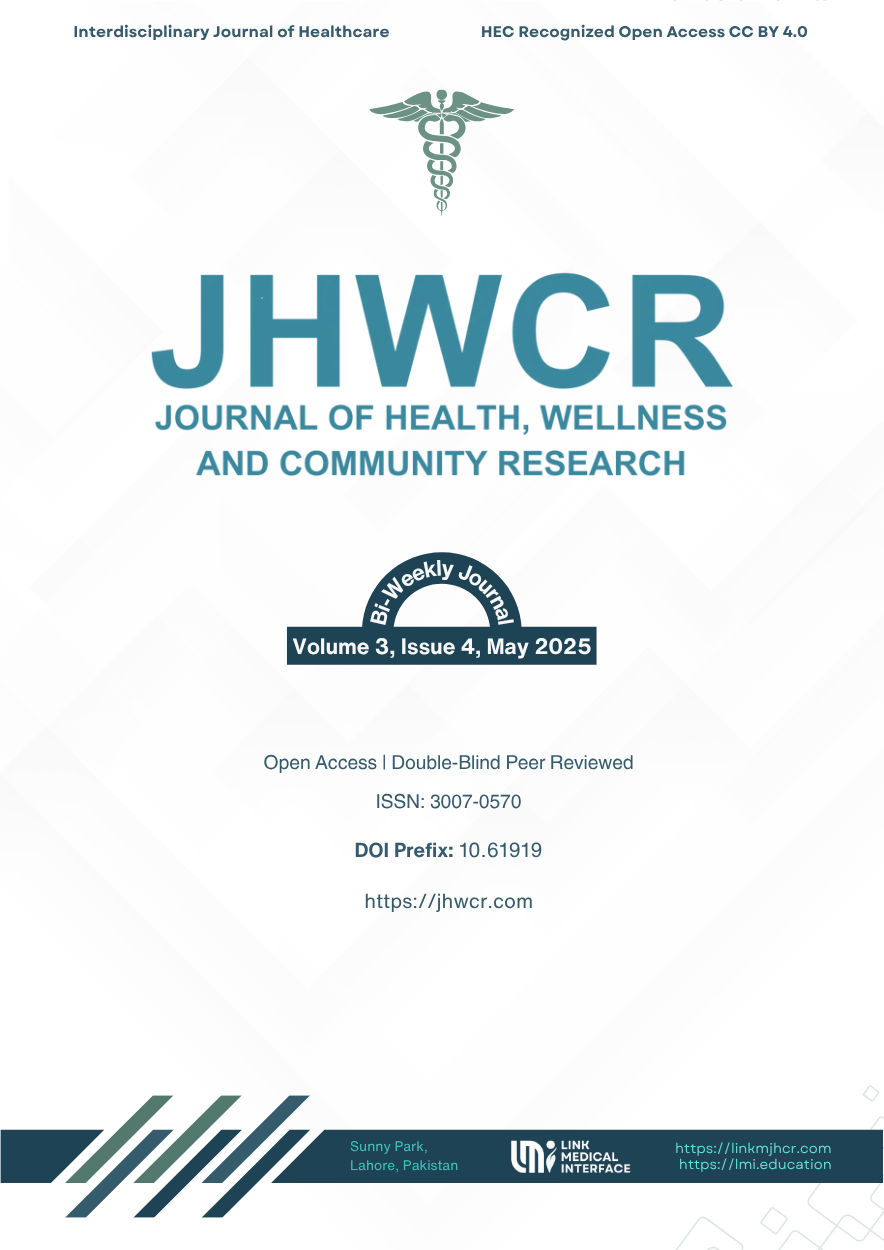Impact of General Anesthesia and Regional Anesthesia on Patient Satisfaction and Pain Management in Cesarean Deliveries
DOI:
https://doi.org/10.61919/z06nay36Keywords:
Cesarean Section, Regional Anesthesia, General Anesthesia, Postoperative Pain, Patient Satisfaction, Spinal Anesthesia, Obstetric AnalgesiaAbstract
Background: Cesarean section rates are rising globally, underscoring the importance of optimizing anesthetic techniques for maternal safety and satisfaction. Objective: This study aimed to compare the effects of general anesthesia versus regional (spinal) anesthesia on postoperative pain intensity and patient satisfaction in women undergoing elective cesarean sections, hypothesizing that RA would yield superior outcomes. Methods: A comparative cross-sectional study was conducted at DHQ Hospital Okara, enrolling 86 term parturients (n = 43 per group) aged 18–40 years undergoing elective cesarean sections. Patients were selected through random sampling based on ASA grade I–II and were excluded if they had chronic pain, cognitive impairment, or contraindications to either anesthetic technique. Postoperative pain was assessed using the Visual Analogue Scale (VAS), and satisfaction was measured via a 5-point Likert scale. Ethical approval was obtained in accordance with the Declaration of Helsinki. Statistical analyses were conducted using SPSS v27, employing independent t-tests, chi-square tests, and Welch’s t-test for unequal variances. Results: Patients receiving spinal anesthesia reported significantly lower pain scores (mean ± SD: 2.71 ± 0.56) compared to those under GA (4.64 ± 0.85; p < 0.001). Satisfaction levels were markedly higher in the RA group (χ² = 52.37, p < 0.001), with 83.7% reporting being satisfied or very satisfied, while 55.8% of GA patients were unsatisfied. Clinically, RA demonstrated superior analgesic efficacy and maternal experience. Conclusion: Regional anesthesia, particularly spinal anesthesia, offers significantly better postoperative pain control and patient satisfaction in elective cesarean deliveries compared to general anesthesia. These findings advocate for the preferential use of RA in obstetric practice and emphasize the importance of informed anesthetic decision-making to enhance maternal care outcomes.
Downloads
Published
Issue
Section
License
Copyright (c) 2025 Shahiryar, Muhammad Nashit Munawar, Sheheryar Yaqoob, Muhammad Shehroz Ali, Muhammad Waleed Ahmed (Author)

This work is licensed under a Creative Commons Attribution 4.0 International License.


